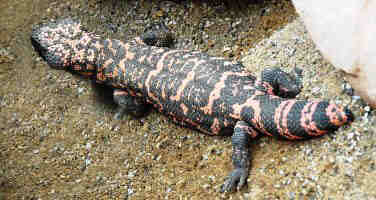The Weapons that carried a Poisoned Arrow
The weapons used by Native Americans to shoot a Poisoned arrow were the Bow and Arrow and the Blowgun.

Picture of a Blowgun
Various tribes made use of the Poisoned Arrow in hunting and warfare, notably the Apache, Navajo, Paiute and the Diegueno Indians of California. However it should be noted that this was not a common practice. The Native American Indians were so skilled with the bow and arrow that any enhancement to the basics was normally unnecessary but a poisoned arrow would have been seen a strong 'medicine'. The Cherokee and a few other tribes of Native Americans used Blowguns with poisoned darts.
Making a Poisoned Arrow - Types of Poison from Reptiles
The poison used by Native Americans for the poisoned arrow or dart was obtained from either reptiles or from extracts from various plants. The reptiles that contained poisons were different types of poisonous snakes and even Gila Monsters.
 | Picture of a
Gila Monster |
To obtain venom from a rattlesnake the reptile was irritated until it repeatedly struck into the spoiled meat or liver of an animal, impregnating it with its toxin. Poisonous snakes were also induced to bite into the meat or liver. The tips of arrows or the blowgun darts were then dipped into the poisoned meat. The Gila Monster is fairly common in the southwest USA. Gila Monsters and the Mexican beaded lizard are the world's only known venomous lizards. The Gila Monster has poison glands in the lower jaw, and it does not inject its venom as a snake does. The Gila Monster needs to bite and chew to break the skin so venom is absorbed. Once again the Native Indians would induce the lizard to to bite into spoiled meat or liver.